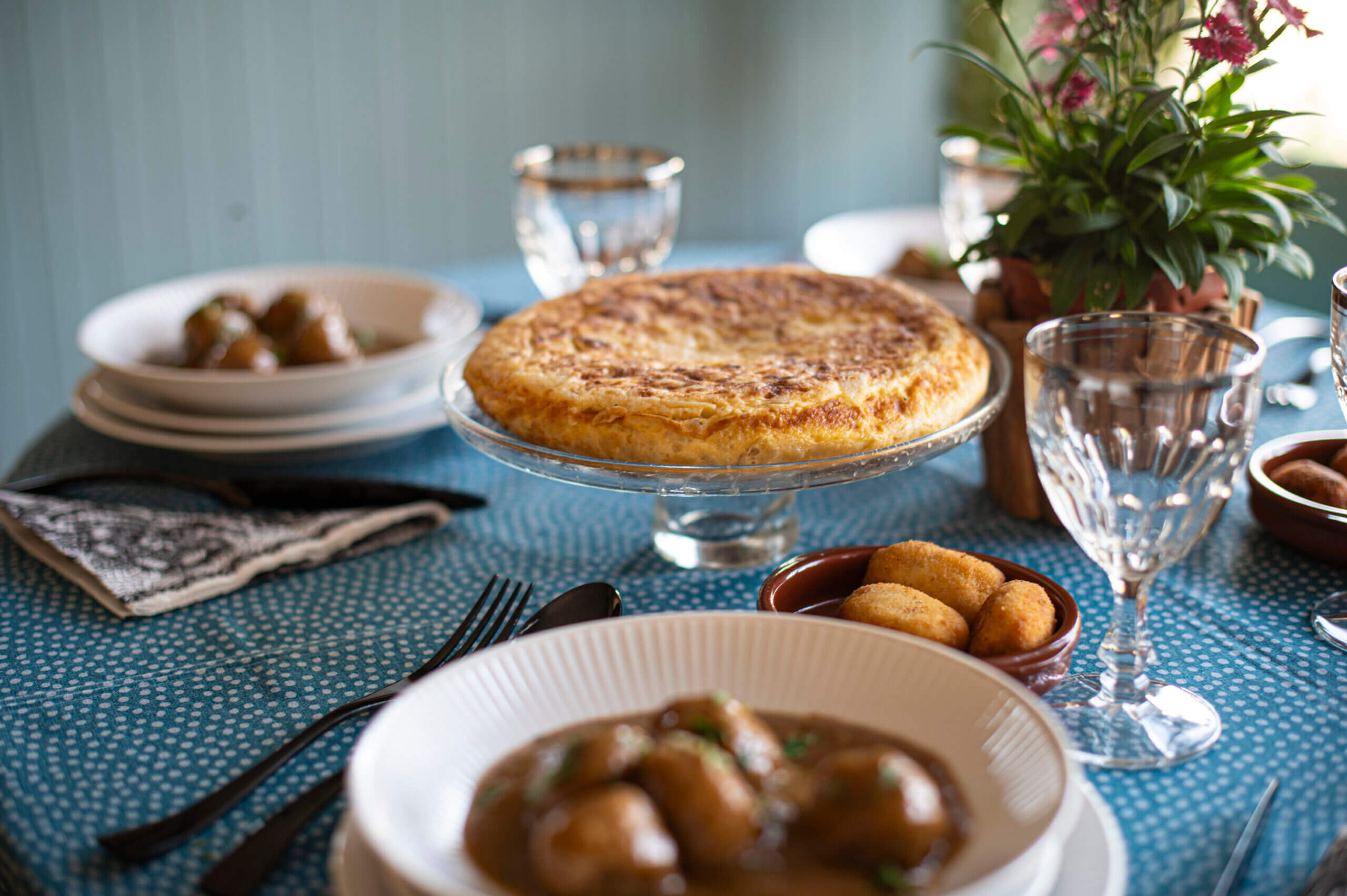When planning a trip to Spain, one of the most exciting aspects is undoubtedly the food. People around the world recognize Spanish cuisine for its flavor and deep cultural roots. For tourists eager to explore what to eat in Spain, understanding the origins of the country’s most famous dishes adds an extra layer of appreciation. From Paella to Tortilla Española, each dish tells a story that reflects the history and traditions of Spain. Let’s dive into the rich origins of the top 10 Spanish dishes that you absolutely must try on your culinary journey.
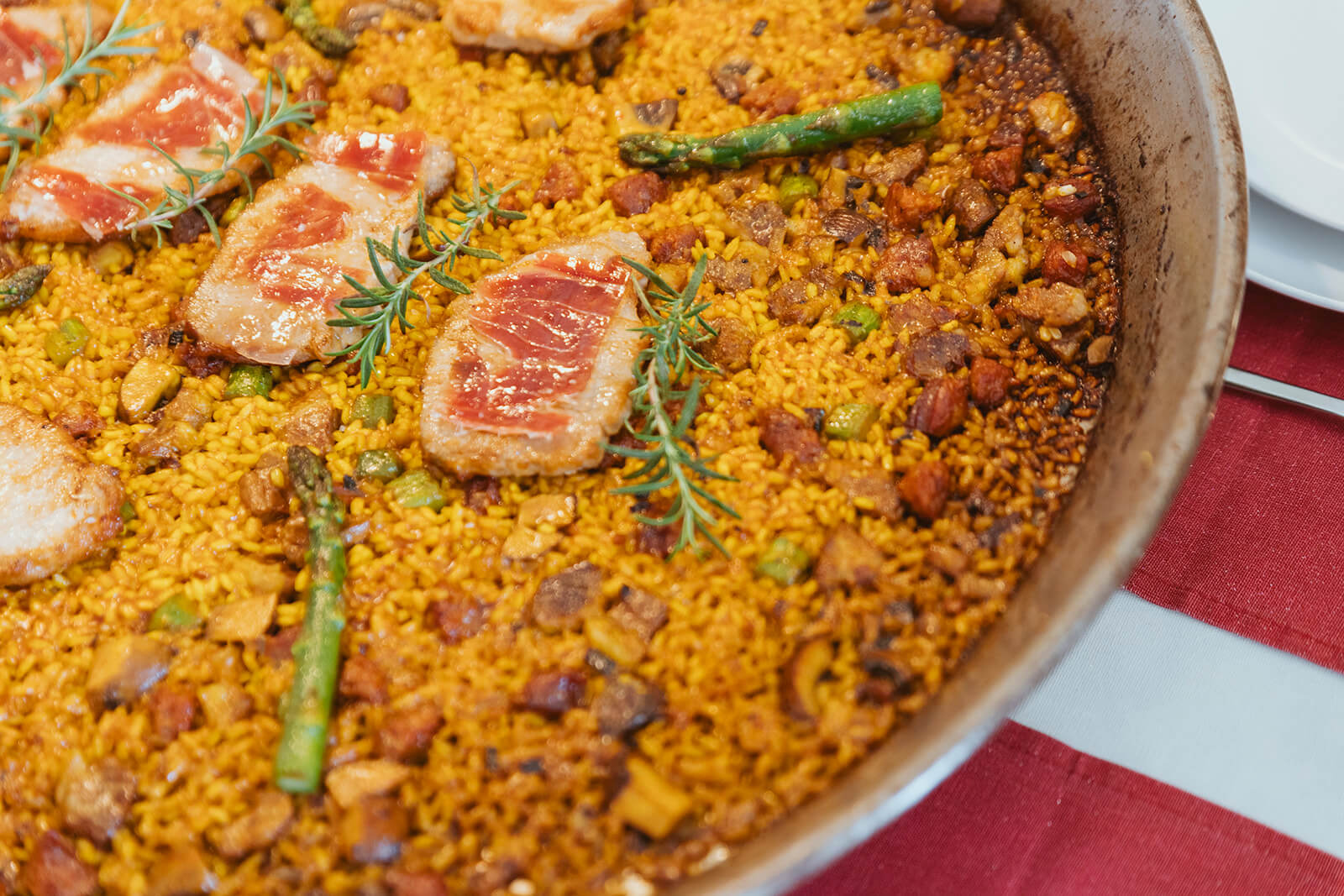
Paella: The Pride of Valencia
Paella, one of the most famous dishes of Spain, originated in the coastal region of Valencia. Cooks traditionally prepare it with saffron-infused rice, seafood, and chicken, making this dish synonymous with Spanish culture. The origins of Paella date back to the 15th century when Valencian farmers and fishermen combined ingredients from their local environment to create this flavorful dish. Over time, it has evolved into various versions, including Paella de Mariscos (seafood paella) and Paella Mixta (mixed paella). Valencia’s fertile fields and proximity to the sea allowed for the perfect combination of ingredients to create this iconic dish. Today, it remains a staple for both locals and tourists alike, making it a must-try for anyone visiting Spain.
Various cities in Spain host competitions for the best paella due to the richness of its culture and flavors. Antonio and Anastasia won first place. They have opened the doors of their home to offer you an incredible experience with their famous paella. Book Here.
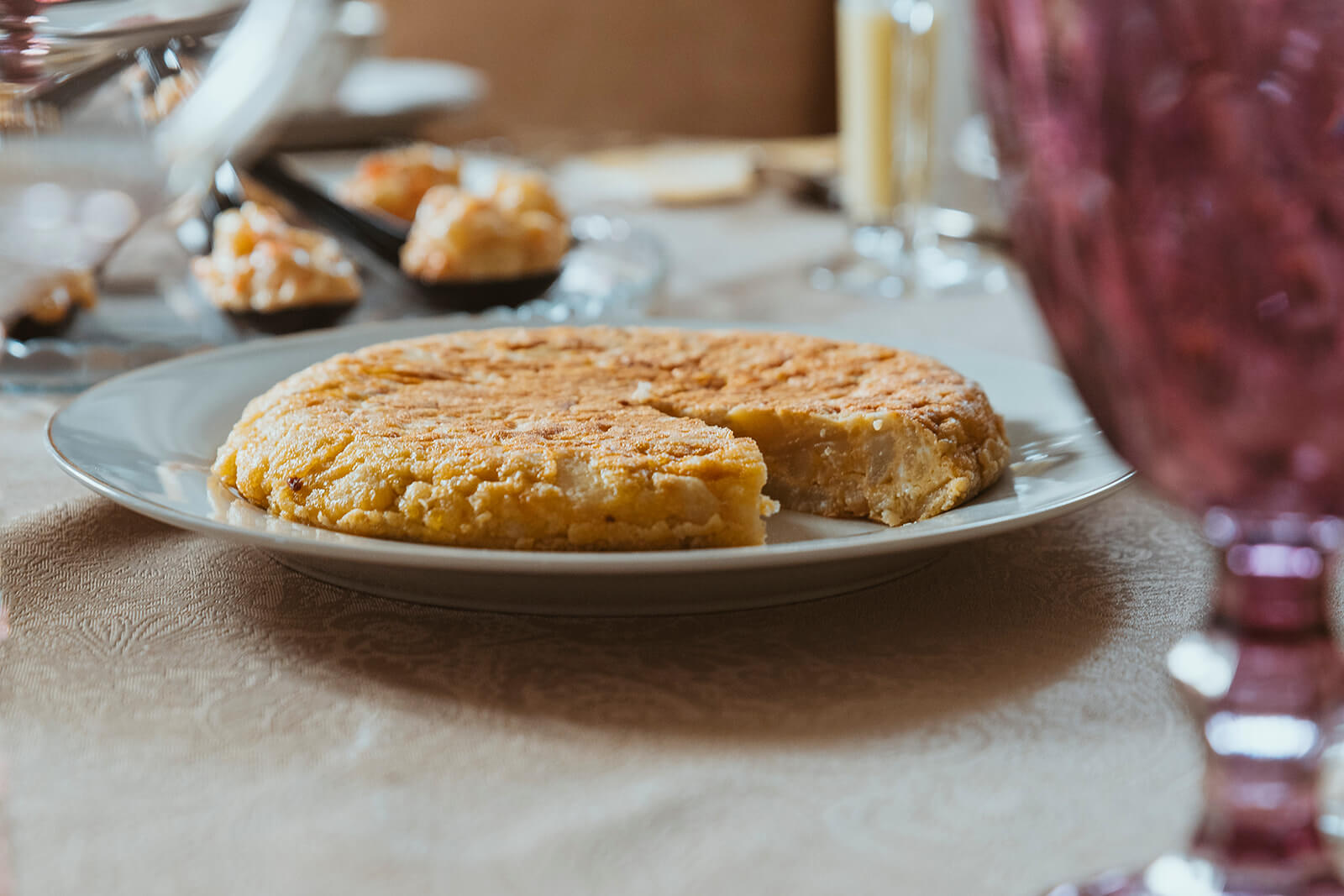
Tortilla Española: A Simple yet Beloved Classic
Tortilla Española, also known as the Spanish omelet, is a simple yet beloved dish with roots that trace back to the 19th century. Originating as a humble meal made from potatoes and eggs, it quickly became a staple due to its affordability and ease of preparation.
People debate the origins of the dish. However, a popular story claims that a general requested a simple, nutritious meal to feed his troops during the Carlist Wars. The result was the omelet, which soon became popular throughout Spain. The best way to try tortilla de patatas is on a tapas menu, and who better to prepare it than a Spanish host, Elena.
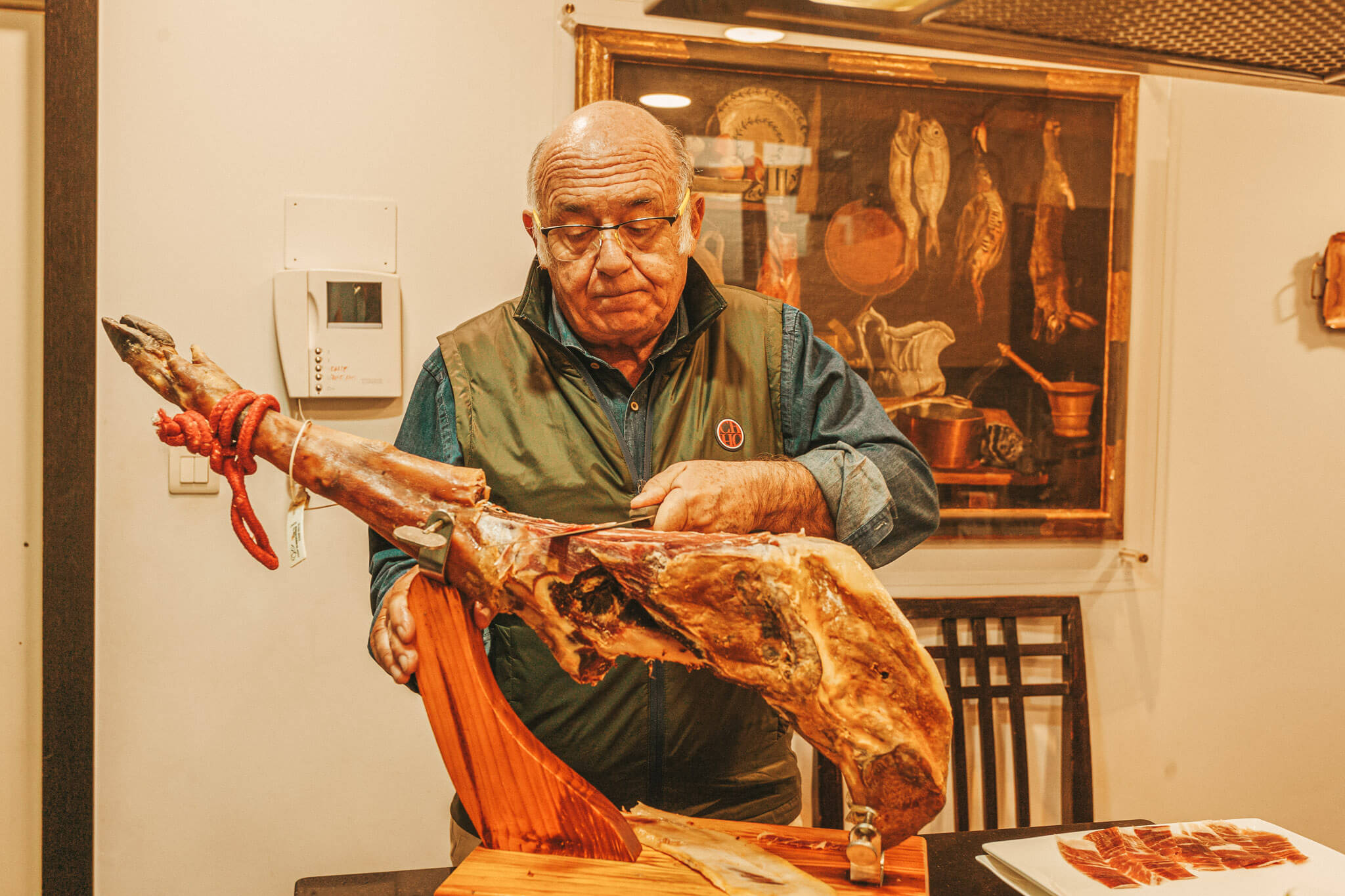
Jamón Ibérico: The King of Cured Meats
No trip to Spain would be complete without tasting Jamón Ibérico, one of the most celebrated cured meats in the world. Originating from the Iberian Peninsula, this delicacy is made from black Iberian pigs that are raised on a diet of acorns, giving the ham its distinctive flavor.
The history of Jamón Ibérico can be traced back to Roman times, but it truly became an art form during the Middle Ages. Curing the ham, a process that can take up to three years, results in a rich and savory product. Spanish culture deeply intertwines with this product. Additionally, people often serve Jamón Ibérico thinly sliced and eat it on its own, allowing its complex flavors to shine.
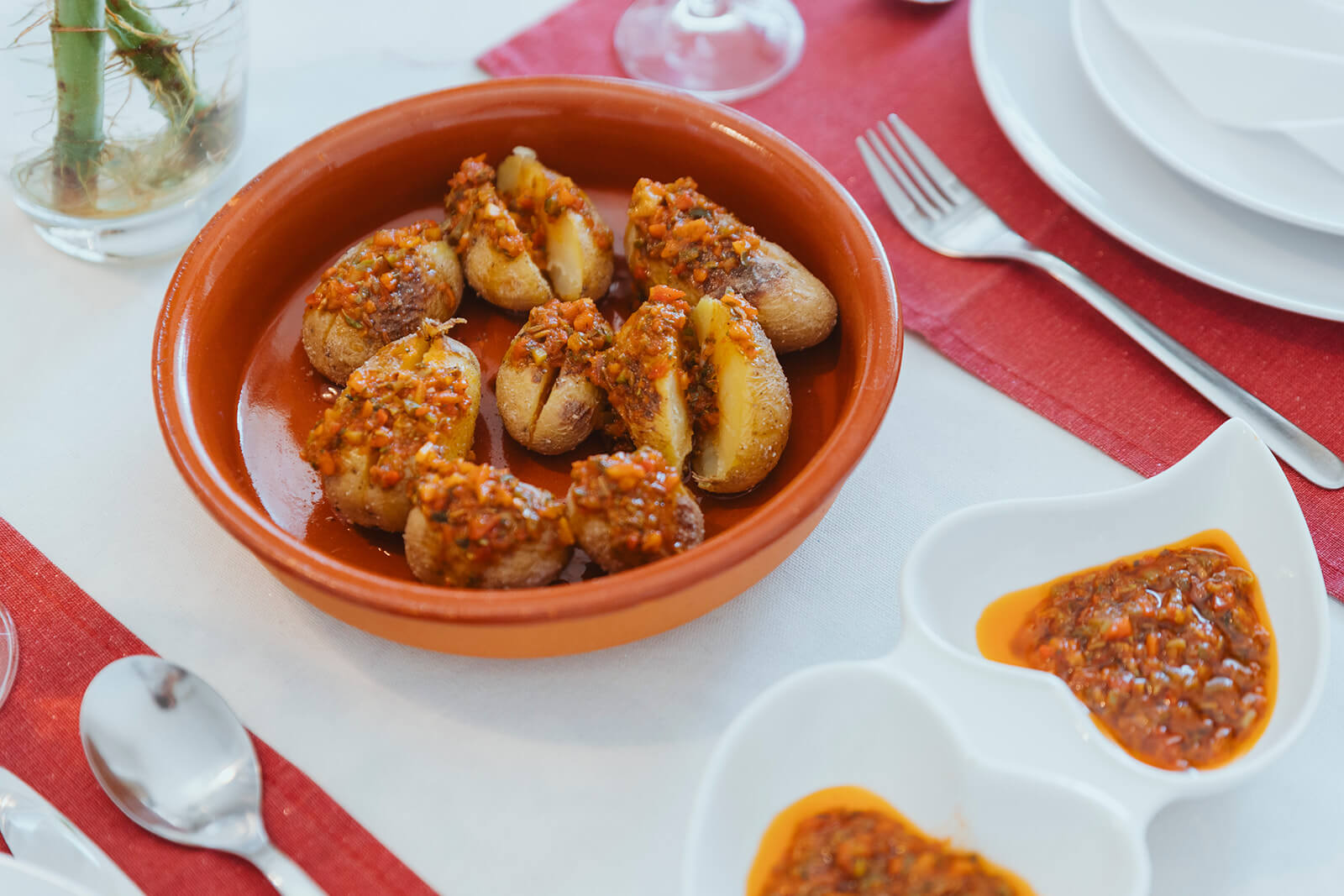
Patatas Bravas: A Spicy Favorite
Patatas Bravas is a dish that highlights Spain’s love for bold flavors. Originating in Madrid, this dish consists of fried potato cubes topped with a spicy tomato sauce and, occasionally, a creamy aioli. The origins of Patatas Bravas are somewhat mysterious, with various Madrid taverns claiming to have invented the dish in the mid-20th century. Its name, “bravas,” meaning “fierce,” reflects the fiery kick that the sauce brings. Despite its relatively recent creation, Patatas Bravas quickly became a favorite among both locals and tourists, often enjoyed as a tapa alongside a cold beer. It’s a dish that perfectly encapsulates the lively and vibrant spirit of Spanish cuisine. At Bea’s country house, you will find the best option to try patatas bravas in Madrid and a complete menu of typical Spanish food, Bea in her country house: more here.
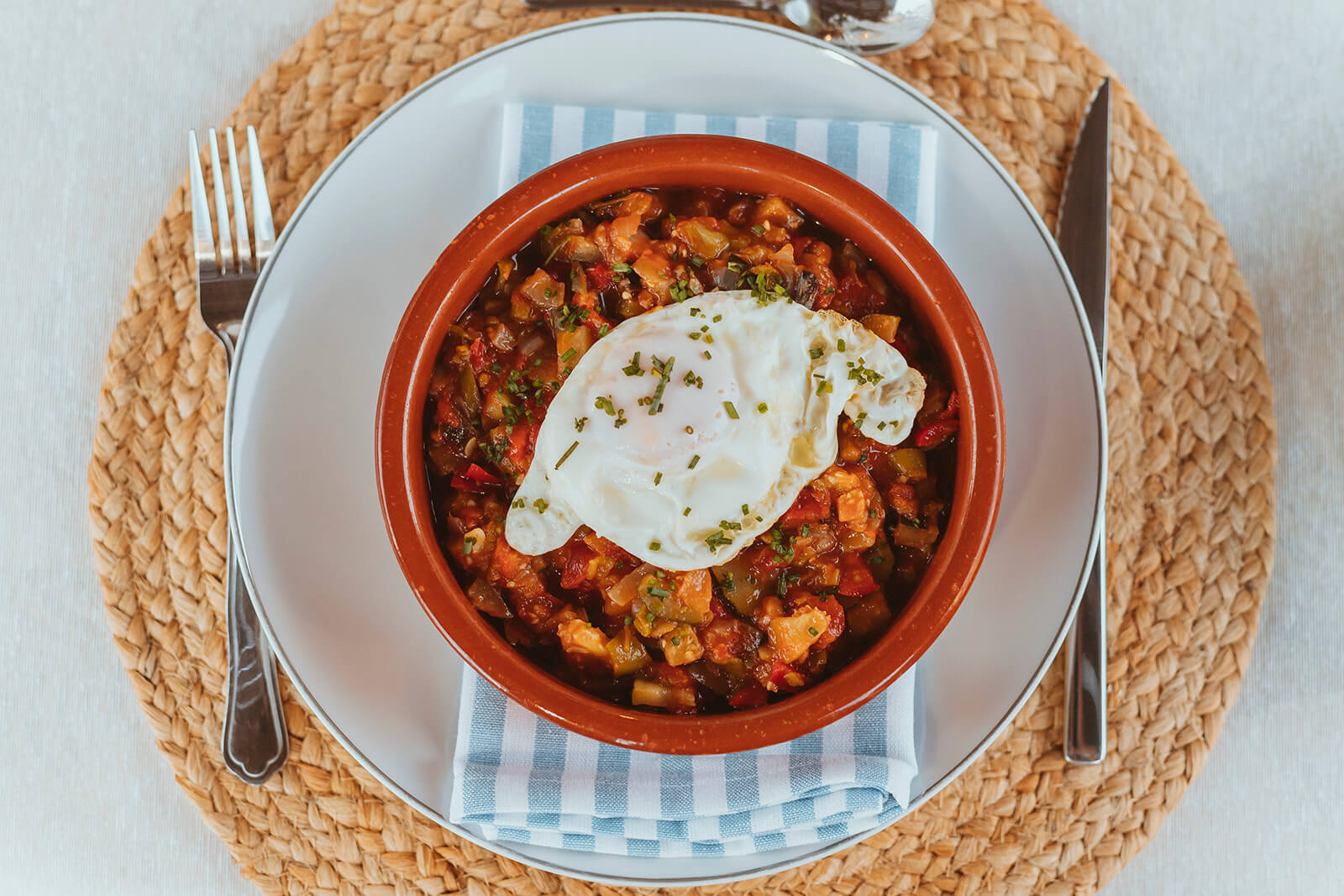
Pisto: Spain’s Version of Ratatouille
Often compared to the French dish ratatouille, Pisto is a vegetable stew that hails from the region of La Mancha, the land of Don Quixote. This dish typically includes tomatoes, peppers, zucchini, and onions, all slowly cooked in olive oil. The origins of Pisto are rooted in Spain’s agricultural traditions, where farmers would use the vegetables they grew to create this simple yet flavorful dish. It’s a versatile dish that can be served as a tapa, side dish, or even as a main course when topped with a fried egg. Pisto reflects Spain’s agricultural heritage and the importance of fresh, locally-sourced ingredients.

Churros: A Sweet Treat with a Rich History
Churros have become a popular treat around the world, but their origins are deeply rooted in Spain. These deep-fried dough sticks, often sprinkled with sugar and served with hot chocolate, date back to the 16th century. Originally, Churros were a simple breakfast food for Spanish shepherds, who would cook the dough over an open fire. Over time, they became a beloved snack across Spain, particularly during festivals and celebrations. The tradition of serving Churros with thick hot chocolate emerged in Madrid and quickly spread throughout the country. Today, Churros are enjoyed at any time of day, making them a must-try for any visitor with a sweet tooth.

Pulpo a la Gallega: Galicia’s Seafood Treasure
Pulpo a la Gallega, or Galician-style octopus, is a dish that showcases the incredible seafood of the Galicia region. This dish features octopus that is boiled and then seasoned with paprika, salt, and olive oil. The simplicity of the preparation allows the natural flavors of the octopus to shine. This dish originated along the Galician coastline, where octopus has been a staple food for centuries. Additionally, the region’s culinary traditions deeply root its history. Pulpo a la Gallega is traditionally served on wooden plates, often accompanied by boiled potatoes. This dish is a perfect example of how Spanish cuisine emphasizes the quality of its ingredients, letting the natural flavors speak for themselves.

Fabada Asturiana: A Hearty Dish from the North
Originating from Asturias in northern Spain, Fabada Asturiana is a hearty bean stew that’s perfect for cooler weather. The dish is made with large white beans, chorizo, morcilla (blood sausage), and pancetta. The origins of Fabada date back to the 16th century when it was enjoyed by rural communities in the mountainous regions of Asturias.This comforting dish reflects the region’s agricultural lifestyle. Moreover, people often enjoy it as a warming meal during the colder months. Traditionally served in a clay pot, Fabada Asturiana is a dish that embodies the rich flavors and robust cooking techniques of northern Spain.
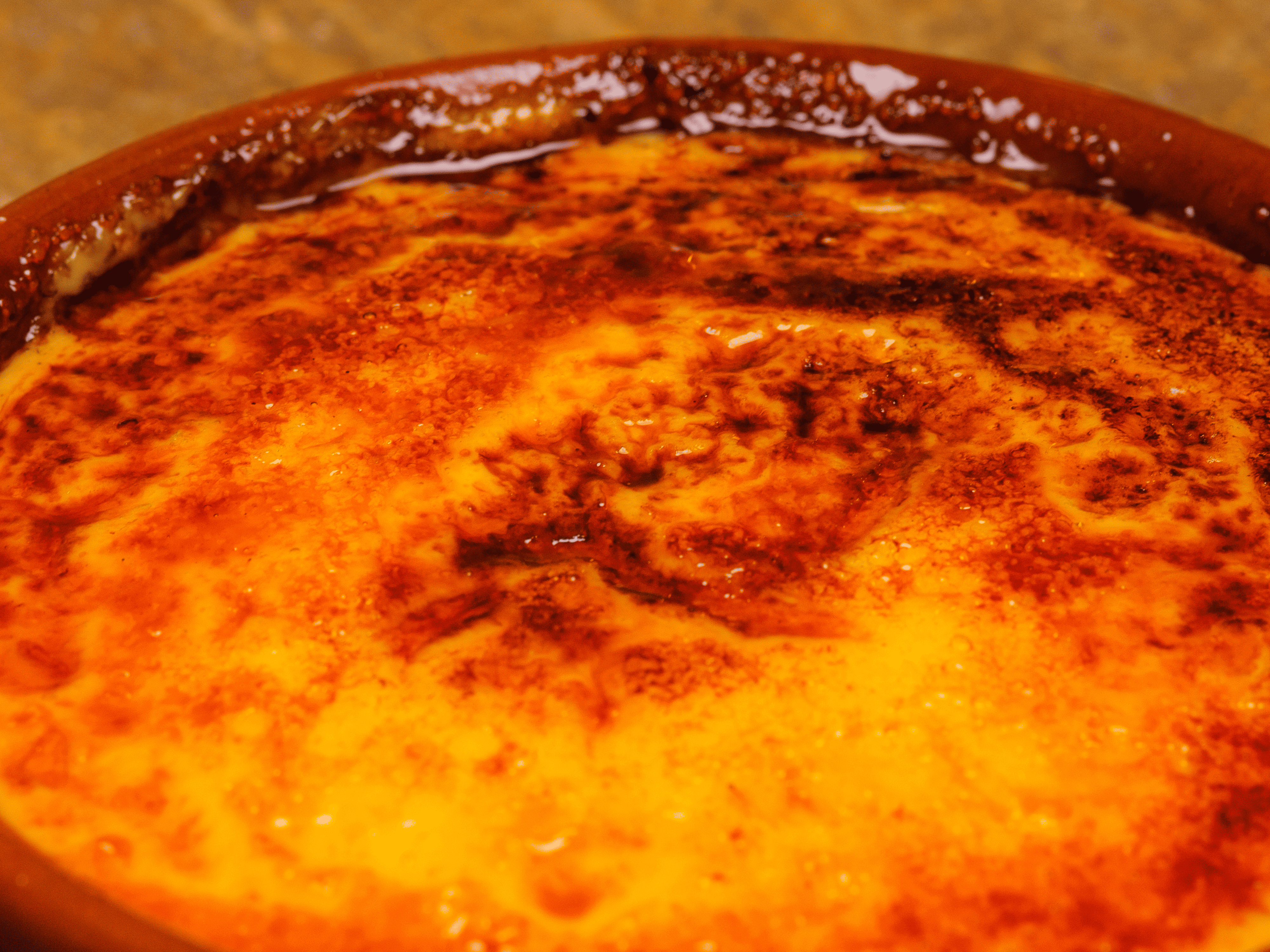
Crema Catalana: Catalonia’s Sweet Legacy
Crema Catalana is a dessert that comes from the Catalonia region and is often compared to French crème brûlée. They flavor this custard dessert with lemon or orange zest and cinnamon, then top it with a layer of caramelized sugar. The origins of Crema Catalana date back to at least the 18th century, making it one of Spain’s oldest desserts.
The contrast between the creamy custard and the crunchy sugar topping makes it a favorite among those with a sweet tooth. People in Spain have enjoyed Crema Catalana for centuries. Moreover, this classic dish is a must-try for tourists.
Gazpacho: The Refreshing Taste of Andalucía
Hailing from the southern region of Andalucía, Gazpacho is a chilled tomato-based soup that’s perfect for hot summer days. Its origins are linked to the Moorish occupation of Spain, where ingredients like tomatoes, peppers, and olive oil were introduced. The dish became popular among field workers. Moreover, they needed a refreshing, nutritious meal to sustain them in the Andalusian heat.
Over time, Gazpacho evolved from a simple bread-based soup to the vibrant tomato-based version we know today. This dish became particularly popular due to its refreshing nature and the abundance of fresh vegetables in the region. For those visiting Spain, a bowl of Gazpacho is a delicious way to cool down while immersing yourself in Spanish history.

A recommendation to eat an authentic gazpacho is in Andalusia. For this reason, Isa in Malaga invites travelers to her home to learn more about this refreshing soup. Book here!
To truly savor and understand the rich history behind these iconic Spanish dishes, immerse yourself in a gastronomic experience with SAZON THE FOLK COOK. Our unique culinary experiences allow you to explore the depth of Spanish gastronomy like never before.
Learn the stories behind each dish and taste the authentic flavors that define Spain. Discover everything about Spanish cuisine through the unforgettable experiences that SAZON offers. Book your culinary adventure now and bring the taste of Spain to your table!

